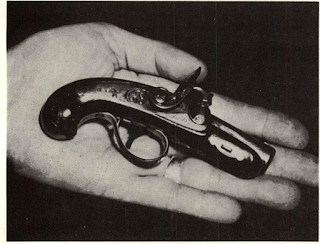Generically, the Deringer pistol, or “Derringer” as
In or ’43, the plant was relisted due to renumbering of that part of town, and became known
Deringer sporting guns, or defense pistols, included
The back action lock was adopted as standard. While
Big pistols, other than Government models, had
The variety of even the “genuine Derringer,” as
Genuine Deringer pistols of pocket size so far as is
In or ’43, the plant was relisted due to renumbering of that part of town, and became known
Deringer sporting guns, or defense pistols, included
 |
Small as the palm of his hand,
|
The back action lock was adopted as standard. While
Big pistols, other than Government models, had
The variety of even the “genuine Derringer,” as
Genuine Deringer pistols of pocket size so far as is
Comments
Post a Comment